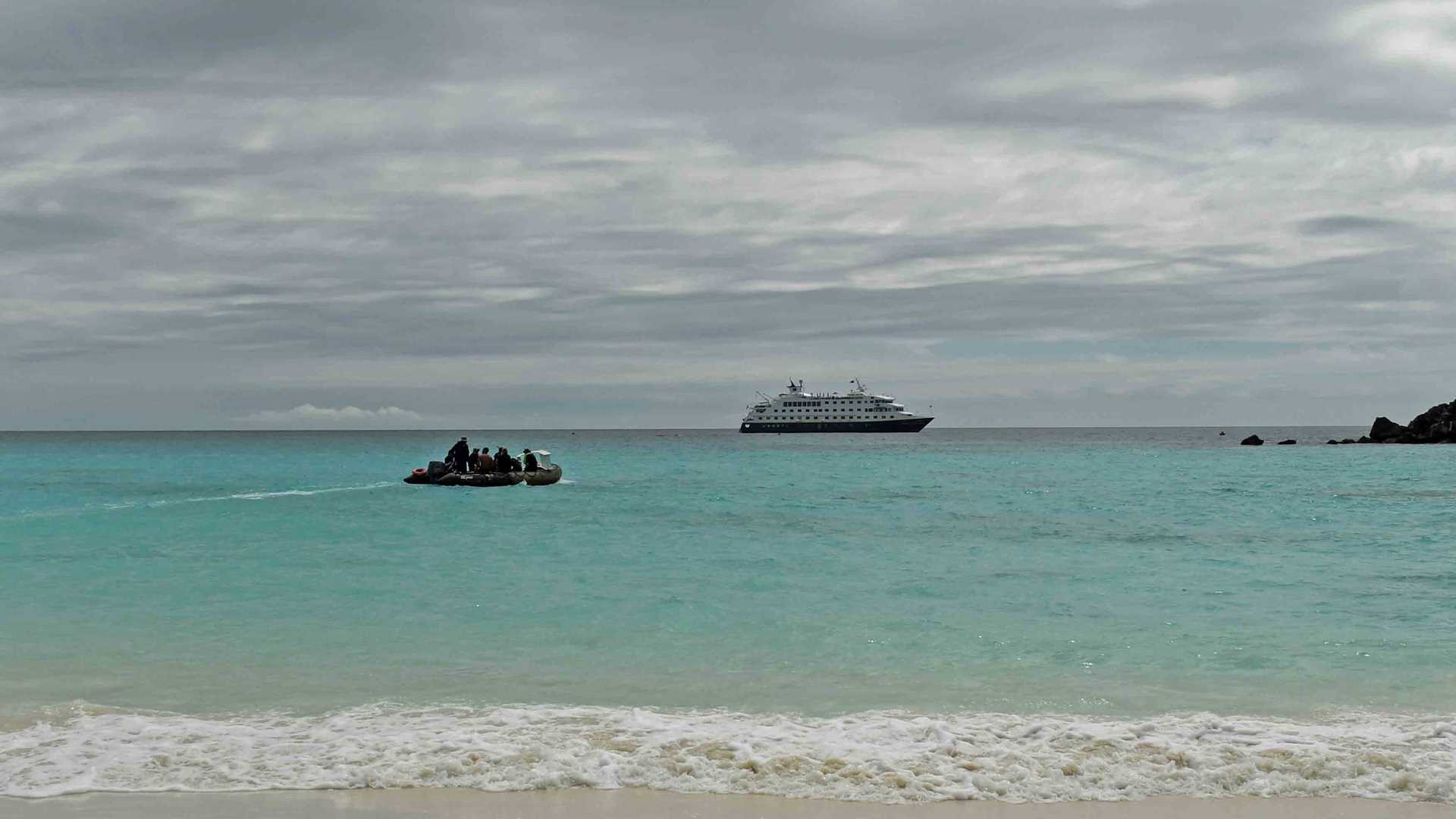It is today our first full day of exploration at Galapagos. We re-positioned last night, heading to the southern region of the archipelago, where we find the oldest islands. Five million years ago, Española Island formed due to a hot spot which nowadays is found at the west of Galapagos Islands. This means that a tectonic plate moved Española around 180 miles away from its original place. Therefore, the landscape of this place is unique, and the animals found here are unique too. The marine iguanas found here are the oldest species, they came to these islands about three million years ago, and they look more red and green than the iguanas found in the other islands of the archipelago. The mockingbirds here are unique too, as they are one of four species found in the archipelago. This island is clearly very special, and our guests were excited to learn about it.
We disembarked at 9 o’clock to snorkel along the coast of Gardner islet, while other explorers went to a nice white sandy beach for swimming and to practice snorkeling in shallow waters. The beach had several colonies of sea lions, a very playful and friendly marine mammal that inhabits the islands. They are known for coming right up to our guests, allowing them to have that unique experience of being close to a wild animal. Galapagos is a unique place where the majority of the animals are not afraid of humans.
On our expeditions, we have many tools of exploration, and one of them is kayaking. Several adventurous guests went to kayak along the coastline, having the opportunity of observing marine birds such as pelicans, frigatebirds, and blue-footed boobies. After spending a great morning on the water, our captain repositioned our ship to the western side of Española, where Punta Suarez is located. On our way, we came across a few killer whales feeding. It was a spectacular show, the “the gift of the day” as we call it.
The afternoon was rainy, but this did not deter our adventurous spirits, and we went ashore to explore this magical place. Punta Suarez is a famous place to see a large colony of waved albatrosses, which are the largest birds of Galapagos. They are endemic just to Española and we are fortunate because this is the right time of the year to see them mating and hatching babies. In addition, it is home to Nazca boobies, sea gulls, frigates, lava lizards, and finches among others. Everywhere you see or walk, you see different animals that coexist in this seemingly harsh environment.
At the end of the day, we were very happy to have seen all of these incredible creatures. Our mission of the day was accomplished!







